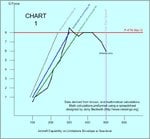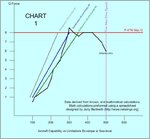JonJGoldberg
Airman 1st Class
Reply To Sal Monella>>>>
From the book The Illustrated History Of Fighters, by Bill Gunston, Exter books, 1981, page 107, P-47N Thunderbolt Length: 36' 4"
Performance of the P-47N-5-RE included a maximum speed of 397 mph at 10,000 feet, 448 mph at at 25,000 feet, and 460 mph at 30,000 feet. Initial climb rate was 2770 feet per minute at 5000 feet and 2550 feet per minute at 20,000 feet. Range (clean) was 800 miles at 10,000 feet. Armanent included six or eight 0.50-inch machine guns with 500 rpg and two 1000-lb or three 500-lb bombs or ten 5-inch rockets. Weights were 11,000 pounds empty, 16,300 pounds normal loaded, and 20,700 pounds maximum. Dimension were wingspan 42 feet 7 inches, length 36 feet 4 inches, height 14 feet 7 inches, and wing area 322 square feet.
Specifications of the P-47D-25-RE: One Pratt and Whitney R-2800-59 Double Wasp eighteen-cylinder air-cooled radial, war emergency power of 2535 hp. Maximum speed was 429 mph at 30,000 feet, 406 mph at 20,000 feet, 375 mph at 10,000 feet, 350 mph at sea level. Initial climb rate was 2780 feet per minute. Climb rate at 30,000 feet was 1575 feet per minute. Service ceiling was 40,000 feet, and range was 950 miles at 10,000 feet. Range with maximum external fuel was 1800 miles at 10,000 feet at 195 mph. Weights were 10,700 pounds empty, 14,600 pounds normal loaded, and 17,500 pounds maximum. Dimensions were wingspan 40 feet 9 3/8 inches, length 36 feet 1 3/4 inches, height 14 feet 7 inches, and wing area 300 square feet.
The above can be referenced @
http://home.att.net/~jbaugher1/p47.html
SPECIFICATIONS (P-47D)
Span: 40 ft. 9 in.
Length: 36 ft. 2 in.
Height: 14 ft. 8 in.
Weight: 17,500 lbs. max.
Armament: Six or eight .50 cal. machine guns and either ten rockets or 2,500 lb. of bombs
Engine: One Pratt Whitney R-2800-59 of 2,430 hp.
Crew: One
Cost: $85,000
PERFORMANCE
Maximum speed: 433 mph.
Cruising speed: 350 mph.
Range: 1,030 miles
Service Ceiling: 42,000 ft.
The above information can be found @
http://www.wpafb.af.mil/museum/air_power/ap.htm
The article quote to which you refer provides info on the XP-47N, undergoing 'Factory' testing. The hype of this 'Factory' testing, wouldn't have allowed any other outcome than the one you quoted. You are quite right in pointing out the improvements in roll rate, and overall maneuverability the new wing brought to the Thunderbolt. However, consider the following... "the war in the Pacific required fighter ranges even greater than did operations over Germany. In pursuit of better long-range performance, in mid-1944 the third YP-47M prototype (42-27387) was fitted with a new "wet" wing of slightly larger span and area. The aircraft was redesignated XP-47N. For the first time in the Thunderbolt series fuel was carried in the wings, a 93 US gallon tank being fitted in each wing. When maximum external tankage was carried, this brought the total fuel load of the XP-47N up to an impressive 1266 US gallons. This fuel load make it possible for a range of 2350 miles to be achieved.
The new wing also incorporated larger ailerons and squared-off wingtips. These innovations enhanced the roll-rate of the Thunderbolt and improved the maneuverability. The dorsal fin behind the bubble canopy was somewhat larger than that on the P-47D. However, the increased fuel load increased the gross weight of the aircraft. In order to cope with the increased gross weight, the undercarriage of the XP-47N had to be strengthened, which increased the weight still further. The maximum weight rose to over 20,000 pounds."
The above in italicscan be referenced @
http://home.att.net/~jbaugher1/p47_13.html (for you Sal)
Anyway... The XP-47N did not have the modified undercarriage, and structural enhancements of the P-47N production variants as the N's wet wings replaced the YP-47M's wings, that were attached to a D's loner body,at the savings of about 300 pounds (The difference in empty weights D/N). So I do not believe they could they have flown the XP-47N at anywhere near it's true 'combat' weight, during it's so called mock battles, or range tests; instead the XP-47 was flown at best, at the D's combat weight (but probably more like the M's pre-production 'combat weight'). Remember Sal, the loner YP-M was developed to demonstrate the ability of the -47 as a pure fighter, designed to catch 'buzz bombs'. You remove 3,000lbs from an aircraft (The difference in combat weights D/N), and this weight savings provided the XP-47N with a very serious advantage, do you agree?. Add to that, the power difference well....
The reality of your article is that a mock battle/s between a 'hot roded' D vs a standard D netted in the standard D's loss, as planed. Any advantage the standard D had/s over the standard N, such as turn rate climb, are lost in this 'demonstration'. In my tables all numbers are at 'combat' weight. The only weight were there is even a remote chance at a 'level playing field'.
The one thing we agree, at least for now, on is that the N was indeed quite different than the D. In reality the N indeed defeats the D. In my tables N indeed defeats the D. But we are not talking reality here, as the two never fought (F4U vs P47, or P47vs P47).So I'm taking this posture, D as opposed to N, for the following reasons... @ combat weight, on production versions, the D's superior turning rate climb combined with it's level stall characteristic on my personal dogfighting scale, defeats the D's roll speed advantage.
From the book The Illustrated History Of Fighters, by Bill Gunston, Exter books, 1981, page 107, P-47N Thunderbolt Length: 36' 4"
Performance of the P-47N-5-RE included a maximum speed of 397 mph at 10,000 feet, 448 mph at at 25,000 feet, and 460 mph at 30,000 feet. Initial climb rate was 2770 feet per minute at 5000 feet and 2550 feet per minute at 20,000 feet. Range (clean) was 800 miles at 10,000 feet. Armanent included six or eight 0.50-inch machine guns with 500 rpg and two 1000-lb or three 500-lb bombs or ten 5-inch rockets. Weights were 11,000 pounds empty, 16,300 pounds normal loaded, and 20,700 pounds maximum. Dimension were wingspan 42 feet 7 inches, length 36 feet 4 inches, height 14 feet 7 inches, and wing area 322 square feet.
Specifications of the P-47D-25-RE: One Pratt and Whitney R-2800-59 Double Wasp eighteen-cylinder air-cooled radial, war emergency power of 2535 hp. Maximum speed was 429 mph at 30,000 feet, 406 mph at 20,000 feet, 375 mph at 10,000 feet, 350 mph at sea level. Initial climb rate was 2780 feet per minute. Climb rate at 30,000 feet was 1575 feet per minute. Service ceiling was 40,000 feet, and range was 950 miles at 10,000 feet. Range with maximum external fuel was 1800 miles at 10,000 feet at 195 mph. Weights were 10,700 pounds empty, 14,600 pounds normal loaded, and 17,500 pounds maximum. Dimensions were wingspan 40 feet 9 3/8 inches, length 36 feet 1 3/4 inches, height 14 feet 7 inches, and wing area 300 square feet.
The above can be referenced @
http://home.att.net/~jbaugher1/p47.html
SPECIFICATIONS (P-47D)
Span: 40 ft. 9 in.
Length: 36 ft. 2 in.
Height: 14 ft. 8 in.
Weight: 17,500 lbs. max.
Armament: Six or eight .50 cal. machine guns and either ten rockets or 2,500 lb. of bombs
Engine: One Pratt Whitney R-2800-59 of 2,430 hp.
Crew: One
Cost: $85,000
PERFORMANCE
Maximum speed: 433 mph.
Cruising speed: 350 mph.
Range: 1,030 miles
Service Ceiling: 42,000 ft.
The above information can be found @
http://www.wpafb.af.mil/museum/air_power/ap.htm
The article quote to which you refer provides info on the XP-47N, undergoing 'Factory' testing. The hype of this 'Factory' testing, wouldn't have allowed any other outcome than the one you quoted. You are quite right in pointing out the improvements in roll rate, and overall maneuverability the new wing brought to the Thunderbolt. However, consider the following... "the war in the Pacific required fighter ranges even greater than did operations over Germany. In pursuit of better long-range performance, in mid-1944 the third YP-47M prototype (42-27387) was fitted with a new "wet" wing of slightly larger span and area. The aircraft was redesignated XP-47N. For the first time in the Thunderbolt series fuel was carried in the wings, a 93 US gallon tank being fitted in each wing. When maximum external tankage was carried, this brought the total fuel load of the XP-47N up to an impressive 1266 US gallons. This fuel load make it possible for a range of 2350 miles to be achieved.
The new wing also incorporated larger ailerons and squared-off wingtips. These innovations enhanced the roll-rate of the Thunderbolt and improved the maneuverability. The dorsal fin behind the bubble canopy was somewhat larger than that on the P-47D. However, the increased fuel load increased the gross weight of the aircraft. In order to cope with the increased gross weight, the undercarriage of the XP-47N had to be strengthened, which increased the weight still further. The maximum weight rose to over 20,000 pounds."
The above in italicscan be referenced @
http://home.att.net/~jbaugher1/p47_13.html (for you Sal)
Anyway... The XP-47N did not have the modified undercarriage, and structural enhancements of the P-47N production variants as the N's wet wings replaced the YP-47M's wings, that were attached to a D's loner body,at the savings of about 300 pounds (The difference in empty weights D/N). So I do not believe they could they have flown the XP-47N at anywhere near it's true 'combat' weight, during it's so called mock battles, or range tests; instead the XP-47 was flown at best, at the D's combat weight (but probably more like the M's pre-production 'combat weight'). Remember Sal, the loner YP-M was developed to demonstrate the ability of the -47 as a pure fighter, designed to catch 'buzz bombs'. You remove 3,000lbs from an aircraft (The difference in combat weights D/N), and this weight savings provided the XP-47N with a very serious advantage, do you agree?. Add to that, the power difference well....
The reality of your article is that a mock battle/s between a 'hot roded' D vs a standard D netted in the standard D's loss, as planed. Any advantage the standard D had/s over the standard N, such as turn rate climb, are lost in this 'demonstration'. In my tables all numbers are at 'combat' weight. The only weight were there is even a remote chance at a 'level playing field'.
The one thing we agree, at least for now, on is that the N was indeed quite different than the D. In reality the N indeed defeats the D. In my tables N indeed defeats the D. But we are not talking reality here, as the two never fought (F4U vs P47, or P47vs P47).So I'm taking this posture, D as opposed to N, for the following reasons... @ combat weight, on production versions, the D's superior turning rate climb combined with it's level stall characteristic on my personal dogfighting scale, defeats the D's roll speed advantage.


